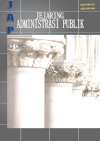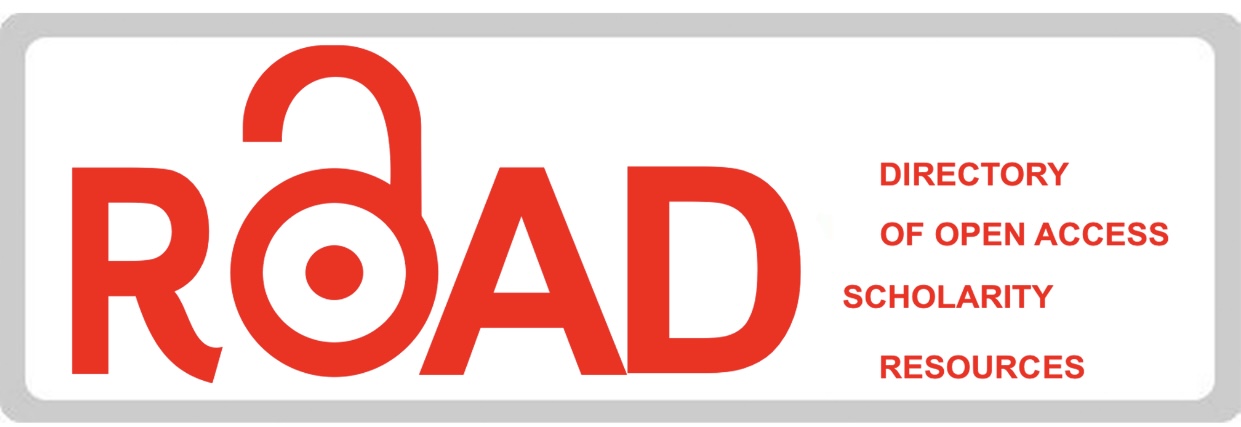Membangun Silogisme Pendekatan Naratif dalam Proses Pembuatan dan Analisis Kebijakan Publik William N. Dunn
Downloads
This research explains how to build a narrative approach syllogism in policy making and analysis using William N. Dunn's framework. The data used in this research uses secondary data from internet searches and literature from reputable journals. This research uses a qualitative and descriptive approach. The conclusion of this research is the syllogism of the narrative approach in public policy studies, consisting of the narrative approach in qualitative research methods, the narrative policy framework (NPF), and the advocacy coalition framework (ACF). In public policy studies, the activities of the policy-making process are divided into two actors with different tasks: first, policymakers carry out agenda setting, formulation, adoption, implementation, and evaluation of policies. Meanwhile, the second actor is a policy analyst, whose job is to identify problems, forecast policies, recommend policies, and monitor and evaluate policies. Each stage can use a narrative approach syllogism, where policymakers can explain and understand whether a policy will impact individuals or communities, understand the experiences and perspectives of the community or other stakeholders, build community empathy and support, and identify unexpected consequences. For policy analysts, the narrative approach of the syllogism is useful in terms of understanding the impact of policies, identifying emerging problems and conflicts, organizing and presenting policy recommendations clearly and persuasively, assisting with efforts to identify emerging issues, identifying dominant and alternative narratives that shape policy debates, understanding the formation, maintenance, and role of coalitions in the policy process, and evaluating policy effectiveness and adjusting recommendations.
Keywords: Public policy, syllogism, narrative approach, Narrative Policy Framework (NPF), Advocacy Coalition Framework (ACF)
Allen, C. (2020). Sigmund Freud, Karen Horney, Nancy Chodorow: Viewpoints on Psychodynamic Theory, in The Balance of Personality. Oregon: Portland State University.
Apriliyanti, I. D., Utomo, W. P., & Purwanto, E. A. (2022). Examining the policy narratives and the role of the media in policy responses to the COVID-19 crisis in Indonesia. Journal of Asian Public Policy, 15(3), 541–557. https://doi.org/10.1080/17516234.2021.1954770
Atmaja, G. M. W. (2017). Metodologi Dan Bahasa Perundang-Undangan. Universitas Udayana. https://simdos.unud.ac.id/uploads/file_penelitian_1_dir/da8bdac8aecbcc14a3c3ed00652c6a47.pdf
BBC News Indonesia. (2023). Mengaburkan makna 'bencana kelaparan' di Papua, peneliti sebut 'upaya pemerintah menyelamatkan muka'. bbc.com. https://www.bbc.com/indonesia/articles/cgepjye828zo
Berinsky, A. J., & Kinder, D. R. (2006). Making sense of issues through media frames: Understanding the Kosovo crisis. Journal of Politics, 68(3), 640–656. https://doi.org/10.1111/j.1468-2508.2006.00451.x
Chikowore, A. I. (2018). Advocacy Coalition Framework as an Actor-Centred Approach to Policy Formulation and Implementation. Paper Prepared for the International Workshop on Public Policy, 3(July), 1–119.
Clandinin, D. J. (2012). Handbook of Narrative Inquiry: Mapping a Methodology. SAGE Publications, Inc.
Dunn, W. N. (2017). Public policy analysis : an integrated approach (6 ed.). Routledge. https://accord.edu.so/course/material/public-policy-and-analysis-480/pdf_content
Dryzek, J. S. (2013). The deliberative democrat's Idea of Justice. European Journal of Political Theory, 12(4), 329-346. https://doi.org/10.1177/1474885112466784
Dye, T. R. (2017). Understanding Public Policy (A. Dodge (ed.); 15 ed.). Pearson.
Easton, D. (1953). The Political System: An Inquiry into the State of Political Science. In American Political Science Review (2013/09/02, Vol. 47, Nomor 3). Cambridge University Press. https://doi.org/DOI: 10.2307/1952911
Elliott, J. (2005). Using narrative in social research: Qualitative and quantitative approaches. Sage Publications, Inc. https://doi.org/10.4135/9780857020246
Fuggle, S. (2023). Modern & Contemporary France Narratives of food insecurity in the penal colony : interpreting memories of ‘ slow violence ' in French Guiana and New Caledonia Caledonia. Modern & Contemporary France, 1–18. https://doi.org/10.1080/09639489.2023.2230448
Gabehart, K. M., & Weible, C. M. (2023). Advocacy Coalition Framework. In M. van Gerven, C. Rothmayr Allison, & K. Schubert (Ed.), Encyclopedia of Public Policy (hal. 1–10). Springer International Publishing. https://doi.org/10.1007/978-3-030-90434-0_5-2
Given, L. M. (2008). The SAGE Encyclopedia Qualitative Research Methods. SAGE Publications, Inc.
Green, M. C., Strange, J. J., & Brock, T. C. (2002). Narrative Impact: Social and Cognitive Foundations (1 ed.). Psychology Press. https://doi.org/https://doi.org/10.4324/9781410606648
High Level Panel of Experts on Food Security and Nutrition (HLPE). (2020). Food security and nutrition: building a global narrative towards 2030. https://www.fao.org/3/ca9731en/ca9731en.pdf
Hughes Spence, S., Khurshid, Z., Flynn, M., Fitzsimons, J., & De Brún, A. (2023). A narrative inquiry into healthcare staff resilience and the sustainability of Quality Improvement implementation efforts during Covid-19. BMC Health Services Research, 23(1), 1–14. https://doi.org/10.1186/s12913-023-09190-4
Jenkins-Smith, H. C., & Sabatier, P. A. (1994). Evaluating the Advocacy Coalition Framework. Journal of Public Policy, 14(2), 175–203. https://doi.org/https://www.jstor.org/stable/4007571
Jones, M. D., Mcbeth, M. K., & Shanahan, A. (2014). Introducing the Narrative Policy Framework. In The Science of Stories (hal. 1–25). Palgrave Macmillan. https://doi.org/https://doi.org/10.1057/9781137485861_1
Jones, M. D., McBeth, M. K., & Shanahan, E. A. (2022). Narratives and the Policy Process: Applications of the Narrative Policy Framework (M. D. Jones, M. K. McBeth, & E. A. Shanahan (ed.)). Montana State University Library. https://doi.org/https://doi.org/10.15788/npf
Kodithuwakku, S. S. (2022). Qualitative Methods for Policy Analysis: Case Study Research Strategy. In J. Weerahewa & A. Jacque (Ed.), Agricultural Policy Analysis: Concepts and Tools for Emerging Economies (hal. 179–193). Springer Singapore. https://doi.org/10.1007/978-981-16-3284-6_7
Kumorotomo, W., Purwanto, E. A., Pramusinto, A., Widaningrum, A., Dwiputrianti, S., & Rahmalia, M. (2013). Naskah Akademik Jabatan Fungsional Analis Kebijakan. http://aaki.or.id/wp-content/uploads/2017/10/wo-2-Academic-Paper-of-Policy-Analyst-LAN-and-UGM-2013.pdf
Lieblich, A., Tuval-Mashiach, R., & Zilber, T. (1998). Narrative Research: Reading, Analysis, and Interpretation. In Narrative research: Reading, analysis, and interpretation. Sage Publications, Inc.
Longaker, J. R. (2013). The Role of Narrative in Constructing an Advocacy Coalition: The Case of Sí£o Paulo's Non-discrimination Policy [University of Kansas]. https://kuscholarworks.ku.edu/bitstream/handle/1808/11717/Longaker_ku_0099M_12644_DATA_1.pdf?sequence=1
Lyons, N., & LaBoskey, V. K. (2002). Narrative Inquiry in Practice: Advancing the Knowledge of Teaching. Teachers College Press. https://books.google.com.ec/books?id=TcR0SbEgRiAC&lpg=PP1&hl=id&pg=PR5#v=onepage&q&f=false
Marshall, C., & Rossman, G. B. (2016). Designing Qualitative Research (H. Salmon & A. Villaruel (ed.); 6 ed.). SAGE Publications Ltd.
Rohman, H., & Kurniawan, T. (2023). Analisis Naratif Kebijakan Reformasi Birokrasi di Indonesia 2005-2025. PUBLIKAUMA: Jurnal Ilmu Administrasi Publik UMA, 11(1), 24–34. https://doi.org/https://doi.org/10.31289/publika.v11i1.9621
Schlaufer, C., Kuenzler, J., Jones, M. D., & Shanahan, E. A. (2022). The Narrative Policy Framework: A Traveler's Guide to Policy Stories. Politische Vierteljahresschrift, 63(2), 249–273. https://doi.org/10.1007/s11615-022-00379-6
Seidman, A., Seidman, R. B., & Abeysekere, N. (2003). Assessing Legislation-A Manual For Legislator (J. Seidman (ed.)). https://iknowpolitics.org/sites/default/files/assessing20legislation20-2001.200320-20en20-20pi.pdf
Shanahan, E. A., Jones, M. D., & Mcbeth, M. K. (2011). Policy Narratives and Policy Processes. Policy Studies Journal, 39(3). https://d1wqtxts1xzle7.cloudfront.net/8540297/NPF_PSJ_FINAL-libre.pdf?1390855837=&response-content-disposition=inline%3B+filename%3DPolicy_Narratives_and_Policy_Processes.pdf&Expires=1703049458&Signature=ePF8jk8N64PMsmXWsdgpYAtOIjyBljqZ5MR2of-Q-Ezj5FG7iXa
Sonnino, R., Marsden, T., & Moragues-faus, A. (2016). approach Relationalities and convergences in food security narratives : towards a place-based approach. The Royal Geographical Society, 41(4), 477–489. https://doi.org/10.1111/tran.l2137
Susmiyati, H. R., Hidayah, R. Al, Harjanti, W., Alfian, Hamzah, H., Hardi, E. H., & Palupi, N. P. (2021). Modul Pelatihan Penyusunan Produk Hukum Desa Peduli Mangrove Dengan Metode ROCCIPI. Mulawarman University Press. https://repository.unmul.ac.id/bitstream/handle/123456789/37213/ROCCIPI MODUL PELATIHAN KLASTER HUKUM ROCCIPI_2021_Revisi_14_03_2022.pdf?sequence=1&isAllowed=y
Walker, W. E. (1978). Public policy analysis: a partnership between analysts and policymakers. Modern techniques of Political and Economic Analysis Applied to Decision-Making Process, 11. https://www.rand.org/content/dam/rand/pubs/papers/2009/P6074.pdf
White, H. (1980). The value of Narrativity in The Representation of Reality. Critical Inquiry.
Copyright (c) 2024 M. Roehman Zainur Riedho, I Made Prastika Angga

This work is licensed under a Creative Commons Attribution-ShareAlike 4.0 International License.
All articles submitted by the author and published in the Jejaring Administrasi Publik are fully copyrighted to their authors under the Creative Commons Attribution-ShareAlike 4.0 International License. The formal legal aspect of journal publication accessibility refers to the Creative Commons Attribution-ShareAlike (CC BY-SA).
















